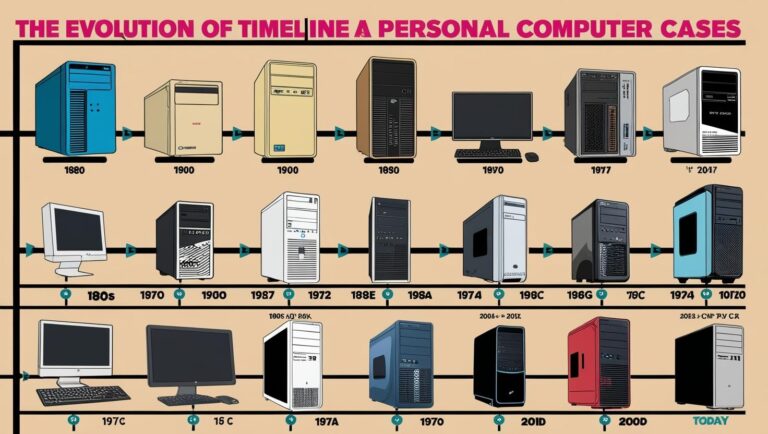
The gaming industry today is a billion-dollar powerhouse, filled with immersive graphics, complex storylines, and global online communities. But before the rise of virtual reality headsets and high-end gaming PCs, there was a golden era that started it all — the era of old-school gaming consoles.
From the chunky cartridges of the Atari 2600 to the iconic controllers of the Nintendo Entertainment System (NES) and Sega Genesis, these retro gaming consoles weren’t just entertainment devices — they were the foundation upon which the entire gaming culture was built.
In this article, we’ll take a deep dive into how classic game consoles shaped today’s gaming world, explore the history of gaming consoles, and discover why video game nostalgia continues to capture the hearts of gamers worldwide.

1. The Birth of Home Gaming: The Early Days
Before the PlayStation and Xbox became household names, the idea of playing a video game at home was revolutionary. The early gaming consoles of the 1970s paved the way for everything that came after.
Magnavox Odyssey (1972): The Pioneer
Often credited as the world’s first home gaming console, the Magnavox Odyssey marked the beginning of the history of gaming consoles. It didn’t have sound or color, and players had to place plastic overlays on their TVs to simulate graphics. Still, it introduced a simple yet groundbreaking concept — interactive entertainment at home.
The Odyssey may seem primitive now, but it laid the foundation for what would become a booming industry. It proved that people loved the idea of playing games on their television, inspiring countless companies to enter the market.
Atari 2600 (1977): The Revolution Begins
When the Atari 2600 hit the shelves, gaming as we know it truly began. For the first time, players could switch between games using cartridges, a revolutionary idea in the late ’70s. Titles like Pong, Space Invaders, and Adventure became instant classics.
Atari also helped establish retro gaming culture, blending creativity with technology in a way that brought joy to millions. The simplicity of 8-bit graphics and beeping soundtracks created an experience that players still look back on fondly today — true video game nostalgia at its finest.

2. The Golden Age of Classic Game Consoles
The early ’80s and ’90s were a defining period in the evolution of video game consoles. This was the time when game design became more sophisticated, storylines deepened, and competition between console makers intensified.
Nintendo Entertainment System (NES): The Savior of Gaming
In the early 1980s, the gaming industry suffered a major crash due to oversaturation and poor-quality games. But in 1985, Nintendo revived the market with the Nintendo Entertainment System (NES) — one of the most iconic classic game consoles of all time.
With legendary titles like Super Mario Bros., The Legend of Zelda, and Metroid, the NES didn’t just sell games; it created worlds, characters, and franchises that still thrive today.
Nintendo’s strict quality control and innovative game design set new standards for the industry. The NES defined what home gaming could be — engaging, challenging, and family-friendly — influencing every console that followed.
Sega Genesis: The Rival that Changed the Game
If Nintendo was the family favorite, Sega was the rebel. The Sega Genesis, released in 1989, brought arcade-quality graphics to living rooms and introduced a new level of speed and excitement with Sonic the Hedgehog.
Sega’s bold marketing, like the slogan “Genesis does what Nintendon’t,” sparked the first major console war. This rivalry between Sega and Nintendo not only drove innovation but also ignited the competitive spirit that still fuels gaming companies today.
The Genesis era highlighted how retro gaming consoles began shaping identity — both for brands and gamers. For many, it wasn’t just about playing games; it was about belonging to a side in the great gaming divide.
3. The Rise of 16-Bit Power and Innovation
The transition from 8-bit to 16-bit graphics marked another major milestone in the evolution of video game consoles. This period brought richer visuals, better sound, and more complex gameplay.
Super Nintendo Entertainment System (SNES): A Legacy of Legends
Nintendo followed the NES with the SNES in 1991, and it became one of the most beloved vintage gaming systems in history. With titles like Super Mario World, The Legend of Zelda: A Link to the Past, and Donkey Kong Country, the SNES redefined storytelling and innovation in gaming.
What made the SNES truly special was its emphasis on depth — both in design and experience. The console introduced features like Mode 7 graphics, which created the illusion of 3D environments, influencing modern game design techniques.
Game Boy: Gaming on the Go
While home consoles dominated, Nintendo also changed the landscape with the Game Boy, released in 1989. It was a portable revolution that made retro gaming culture even more accessible.
Games like Tetris and Pokémon Red and Blue turned the Game Boy into a global phenomenon, showing that gaming didn’t need fancy graphics — just creativity and fun gameplay.

4. The Dawn of 3D: From Retro to Realism
As the 1990s progressed, classic game consoles began to experiment with 3D graphics, giving players a taste of what modern gaming would become.
Sony PlayStation: Redefining Entertainment
The Sony PlayStation, launched in 1994, marked a new era in the history of gaming consoles. With CD-based games, better soundtracks, and cinematic experiences, the PlayStation changed the way people viewed gaming.
Franchises like Final Fantasy VII, Metal Gear Solid, and Resident Evil pushed the boundaries of storytelling and gameplay. For many, this was the bridge between retro gaming consoles and the sophisticated gaming systems of today.
Sony’s introduction of memory cards and innovative 3D design tools paved the way for today’s open-world games and detailed storytelling experiences.
Nintendo 64: Bringing 3D to Life
Not to be outdone, Nintendo entered the 3D race with the Nintendo 64 (N64) in 1996. Titles like Super Mario 64 and The Legend of Zelda: Ocarina of Time revolutionized gameplay mechanics and camera control — setting standards still used in modern games.
The N64’s four-controller ports also redefined multiplayer gaming, creating a social gaming experience that foreshadowed today’s online co-op culture.
5. The Influence of Retro Gaming Consoles on Modern Design
Many elements of modern gaming — from controller layouts to save systems — trace their origins back to old-school gaming consoles. Let’s look at how these early innovations continue to shape the gaming landscape.
a) Controller Design
The directional pad (D-pad), shoulder buttons, and analog sticks — all came from classic game consoles like the NES, SNES, and N64. Today’s controllers still use these foundational designs, proving how forward-thinking those early engineers were.
b) Game Genres and Mechanics
Genres like platformers, shooters, and RPGs were born during the vintage gaming systems era. The groundwork laid by Super Mario Bros., The Legend of Zelda, and Final Fantasy continues to inspire modern developers.
c) Cartridge-to-Digital Evolution
The shift from cartridges to CDs and now to digital downloads mirrors the technological journey that started with early gaming consoles. Yet, even with streaming and digital storage, players still hold a soft spot for the tactile feel of a cartridge click — a symbol of true video game nostalgia.
6. Retro Gaming Culture: The Timeless Appeal
Despite the incredible advancements in technology, retro gaming culture has experienced a massive resurgence. Gamers young and old are rediscovering the charm of pixel art, chiptune soundtracks, and challenging gameplay.
Why Retro Gaming Endures
- Simplicity and Challenge: Old games were often tougher and more straightforward, rewarding skill and patience.
- Emotional Connection: Many players associate old-school gaming consoles with childhood memories and simpler times.
- Community Revival: From retro game expos to online forums, the retro gaming culture is thriving, connecting generations through shared nostalgia.
Modern Retro Consoles
Companies have tapped into this nostalgia by re-releasing mini versions of classic game consoles like the NES Classic Edition, Sega Genesis Mini, and PlayStation Classic. These devices combine vintage aesthetics with modern convenience, offering gamers the best of both worlds.
7. The Cultural Impact of Early Gaming Consoles
The influence of old-school gaming consoles extends far beyond entertainment — it shaped pop culture, art, and even social behavior.
a) Gaming as Storytelling
Early consoles transformed games from simple challenges into emotional experiences. Titles like Final Fantasy VI and Chrono Trigger introduced deep narratives and character development, inspiring the cinematic storytelling of modern franchises like The Last of Us.
b) Music and Soundtracks
The catchy, 8-bit tunes of vintage gaming systems laid the foundation for modern video game music. Composers like Koji Kondo (Super Mario Bros., Zelda) proved that simple sounds could evoke strong emotions — something still celebrated in orchestral game concerts today.
c) Pop Culture and Identity
Icons like Mario, Sonic, and Link became global symbols. They not only represented their respective brands but also defined entire generations of players. These characters remain relevant today, appearing in new games, movies, and merchandise — bridging the gap between retro gaming culture and modern media.
8. Lessons from the Evolution of Video Game Consoles
The journey from early gaming consoles to today’s next-gen systems offers valuable lessons for the gaming industry.
1. Innovation Thrives on Simplicity
The earliest consoles proved that innovation doesn’t always mean complexity. Sometimes, the simplest ideas — like jumping over obstacles or shooting pixelated aliens — can create timeless fun.
2. Creativity Over Technology
While technology has advanced dramatically, creativity remains the heart of gaming. Retro gaming consoles thrived because of imaginative design and engaging gameplay, not high-end graphics.
3. Community Is Everything
The social aspect of gaming, from couch co-op on the N64 to global multiplayer today, has always been about connection. The roots of this lie in old-school gaming consoles, which brought families and friends together in front of one screen.
9. Modern Homage to Retro Games
Today’s game developers often draw inspiration from vintage gaming systems. Titles like Shovel Knight, Celeste, and Stardew Valley embrace pixel art and classic mechanics while introducing modern twists.
Indie developers, in particular, celebrate video game nostalgia by combining retro aesthetics with fresh storytelling. These games remind players that no matter how advanced graphics become, gameplay and emotion remain the true soul of gaming.
10. Collecting Classic Game Consoles: A Growing Passion
With the rise of retro gaming culture, collecting classic game consoles and cartridges has become a booming hobby. From rare Atari editions to limited-run Sega systems, enthusiasts hunt for pieces of gaming history.
Collectors value these vintage gaming systems not just as gadgets but as cultural artifacts — symbols of creativity and technological evolution. Owning them isn’t about playing the games alone; it’s about preserving the story of gaming itself.
11. The Future Inspired by the Past
Even as gaming enters the realms of virtual and augmented reality, the spirit of old-school gaming consoles continues to guide innovation. Features like local multiplayer, simple controls, and replayable gameplay loops are direct legacies of early gaming design.
Companies like Nintendo have mastered this balance — blending innovation with nostalgia. The Switch, for example, seamlessly combines handheld gaming with console power, echoing the ingenuity of past devices like the Game Boy and SNES.
The evolution of video game consoles is a perfect blend of progress and memory — proving that the past is not something left behind but a foundation for what’s next.
12. Why Video Game Nostalgia Still Matters
For gamers, video game nostalgia isn’t just about replaying old titles; it’s about reconnecting with the feelings those games sparked — joy, discovery, and imagination. In a fast-paced digital age, these memories remind us why we fell in love with gaming in the first place.
The tactile feel of inserting a cartridge, the pixelated explosion after defeating a boss, or the 8-bit melody that played during your first victory — these experiences transcend time. They remind us that technology may evolve, but the essence of fun never changes.
Conclusion: The Legacy Lives On
From the early gaming consoles of the 1970s to the sleek systems of today, the journey of gaming is a testament to human creativity and curiosity. The old-school gaming consoles that once defined living-room entertainment have now become cultural icons, influencing every pixel, sound, and storyline in modern gaming.
The retro gaming consoles of yesterday taught developers the importance of play, imagination, and challenge. The classic game consoles like the NES, Sega Genesis, and PlayStation laid the groundwork for an industry that now shapes art, storytelling, and technology worldwide.
Whether it’s the pixel-perfect charm of Super Mario Bros. or the innovative worlds of The Legend of Zelda, these vintage gaming systems remind us where it all began. And as we continue to advance into new frontiers of gaming, the influence of these pioneers remains ever-present.





